Filter by
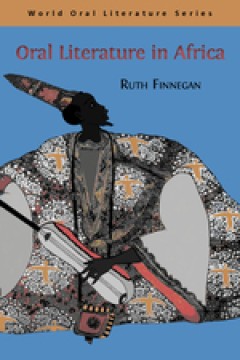
Oral Literature in Africa
Ruth Finnegan’s Oral Literature in Africa was first published in 1970, and since then has been widely praised as one of the most important books in its field. Based on years of fieldwork, the study traces the history of storytelling across the continent of Africa.
- Edition
- -
- ISBN/ISSN
- 9781906924720
- Collation
- -
- Series Title
- World Oral Literature Series volume 1
- Call Number
- 800 FEN o
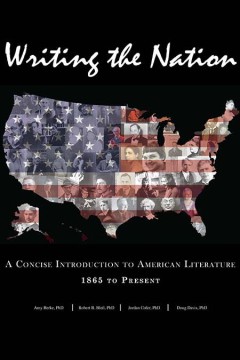
Writing the Nation : A Concise Introduction to American Literature, 1865-Present
Since America's founding, the diversity of American writers has shaped its literature. Authors and poets of the past have created a colorful collection of works that are still studied today alongside contemporary works. Writing the Nation: A Concise Introduction to American Literature 1865 to Present, is designed to continue the preservation of famous American literary works in the minds of col…
- Edition
- -
- ISBN/ISSN
- 9781940771342
- Collation
- -
- Series Title
- -
- Call Number
- 813 WRI
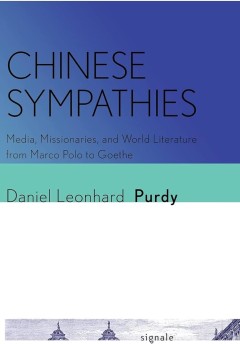
Chinese Sympathies : Media, Missionaries, and World Literature from Marco Pol…
Chinese Sympathies examines how Europeans—German-speaking writers and thinkers in particular—identified with Chinese intellectual and literary traditions following the circulation of Marco Polo's Travels. This sense of affinity expanded and deepened, Daniel Leonhard Purdy shows, as generations of Jesuit missionaries, baroque encyclopedists, Enlightenment moralists, and translators establish…
- Edition
- -
- ISBN/ISSN
- 9781501759758
- Collation
- -
- Series Title
- -
- Call Number
- 800 PUR c
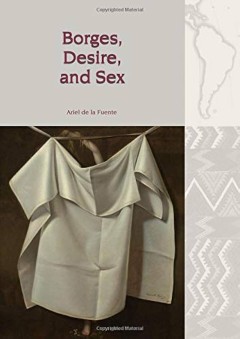
Borges, Desire, and Sex
The Argentine Jorge Luis Borges, one of the most sophisticated writers of the twentieth century, suffered from sexual impotence. This emotionally overwhelming condition shaped his literary experience in ways that have not been understood. Until now Borges has largely been considered an asexual author who could not read, think, or write about desire and sex, but in this book historian Ariel de l…
- Edition
- -
- ISBN/ISSN
- 9781786941503
- Collation
- -
- Series Title
- Liverpool Latin American Studies
- Call Number
- 800 FUE b
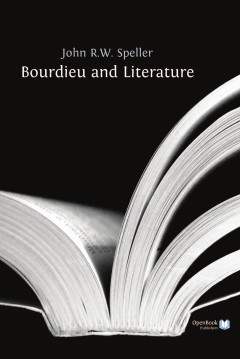
Bourdieu and Literature
One of the foremost French intellectuals of the post-war era, Bourdieu has become a standard point of reference in the fields of anthropology, linguistics, art history, cultural studies, politics, and sociology, but his longstanding interest in literature has often been overlooked. This study explores the impact of literature on Bourdieu's intellectual itinerary, and how his literary understand…
- Edition
- -
- ISBN/ISSN
- 9781906924447
- Collation
- 203 halaman
- Series Title
- -
- Call Number
- 800 SPE b

Russian Formalism : A Metapoetics
Russian Formalism, one of the twentieth century's most important movements in literary criticism, has received far less attention than most of its rivals. Examining Formalism in light of more recent developments in literary theory, Peter Steiner here offers the most comprehensive critique of Formalism to date. Steiner studies the work of the Formalists in terms of the major tropes that characte…
- Edition
- -
- ISBN/ISSN
- 9780801417108
- Collation
- -
- Series Title
- -
- Call Number
- 800 STE r

Sea-changes : Melville - Forster - Britten: The story of Billy Budd and its o…
E. M. Forster first encountered Billy Budd in 1926. Some twenty years later, he embarked on a collaboration with Benjamin Britten and Eric Crozier, adapting Melville’s novella for the opera stage. The libretto they produced poignantly reaffirms the Forsterian creed of salvation through personal relationships. This study presents an extensive exploration of Forster’s involvement in the inter…
- Edition
- -
- ISBN/ISSN
- 9783863950453
- Collation
- -
- Series Title
- -
- Call Number
- 800 ROC s

American Classics : Evolutionary Perspectives
This collection of essays offers evolutionary psychological analysis of selected works from the American literary tradition. Application of evolutionary theory to writing by Ben Franklin, Nathaniel Hawthorne, Mark Twain, Walt Whitman, Edith Wharton, F. Scot Fitzgerald, Zora Neal Hurston, and others creates an interdisciplinary framework for examining key textual features: plot, theme, tone, set…
- Edition
- -
- ISBN/ISSN
- 9781618117656
- Collation
- -
- Series Title
- Evolution, Cognition, and the Arts
- Call Number
- 800 SAU a
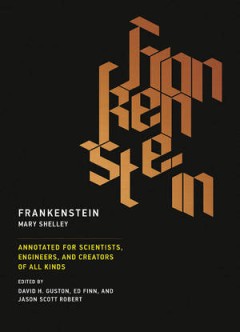
Frankenstein: A New Edition for Scientists and Engineers
This new critical edition of Mary Shelley’s Frankenstein was developed by leading scholars for aspiring scientists, engineers, and medical professionals. This unique framing will make this a core text in promoting and enhancing interdisciplinary dialogue on the nature, roles, and responsibilities of scientists and engineers in society. To be published in time for the 2018 bicentennial of its …
- Edition
- -
- ISBN/ISSN
- 9780262533287
- Collation
- -
- Series Title
- -
- Call Number
- 823 SHE f

The desert home : The Adventures of a Lost Family in the Wilderness
Excerpt h we were travelling, although uninhabited and almost unexplored by the Mexican Spaniards, was yet part of their territory; and such objects as were known to them, through hunters or others, had received names in their language. We crossed the Pecos, and travelled for some days up its left bank, in hopes of reaching some other stream that might run into it from the east, which we could …
- Edition
- -
- ISBN/ISSN
- -
- Collation
- -
- Series Title
- -
- Call Number
- 813 REI d
 Computer Science, Information & General Works
Computer Science, Information & General Works  Philosophy & Psychology
Philosophy & Psychology  Religion
Religion  Social Sciences
Social Sciences  Language
Language  Pure Science
Pure Science  Applied Sciences
Applied Sciences  Art & Recreation
Art & Recreation  Literature
Literature  History & Geography
History & Geography